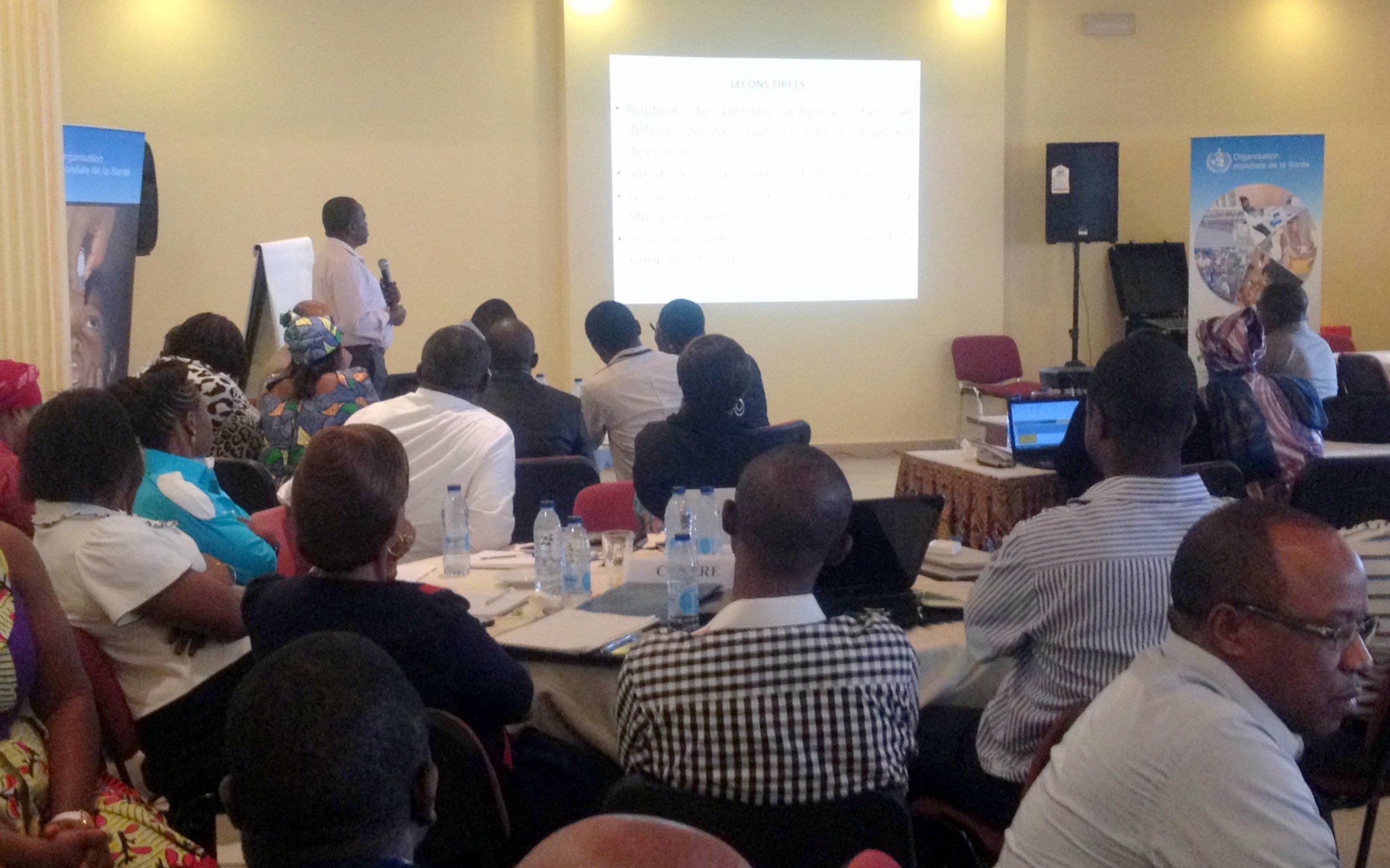Photo: EPI meeting, Cameroon
This page of the Temperature Monitoring Technical Resources website is about training. It will summarize identified good practices for training of the technical and managerial skills needed for effective temperature surveillance. In the Related resources at the bottom of the page you can find extensive training material including examples of training protocols, presentations, brochures, posters, pictograms, videos and exercises.
This section will have the following content:
- Refresher training on vaccine and equipment handling
- 30DTR training
- Training on a SMS communication model
- RTM training
- Training on data management and analysis
Introduction
As stated in the first section, the efficacy of Temperature Monitoring is not as much device-driven as depending on a system of user training, clear accountabilities and supportive management.
Therefore training should not be underestimated. It is not a one-off task but should be regularly provided, in particular if the staff turnover is high. It should be hands-on with personal coaching and trainers should observe the practice to verify that the skills have actually been acquired.
A few general remarks on training for consideration:
- Any training should focus on explaining not only WHAT should be learned and HOW it should be done but WHY. People who understand why they are requested to do what they are requested to do are much more likely to keep doing it and to do it well. This is particularly important for tasks that must be performed every day as a routine.
- The gender factor and the supervisor/supervisee factor should be taken into consideration. Within the EPI programmes most supervisors are male and the majority of the nurses and health workers are female. This might undermine the efficacy of the training for women. Studies on learning show that women learn best in a more applied way and through hands-on-training as they are more dubious towards technology. They need to understand how it will benefit their work. Furthermore some might feel intimidated and be afraid to ask more questions if their supervisor is leading the training or present during the training.
Training is critical both for health workers and supervisors and should include:
- Vaccine handling
- Read information on display screen and record it correctly on the Temperature Monitoring sheet
- Respond: address alarms as soon as possible to avoid damage to vaccines
- Report: collect data for accurate record and analysis
- Performing routine checks and preventive maintenance tasks to avoid temperature excursions
Furthermore supervisors and technicians may need to be trained on:
- Analyzing the information to make a diagnosis (sometimes remotely) of the issue/equipment problem
- Supportive supervision
- Proactive decision-making
Both health workers and supervisors must be trained on how to respond to alarms with the resources that are available to them while being encouraged and empowered to implement local solutions whenever it is possible.

